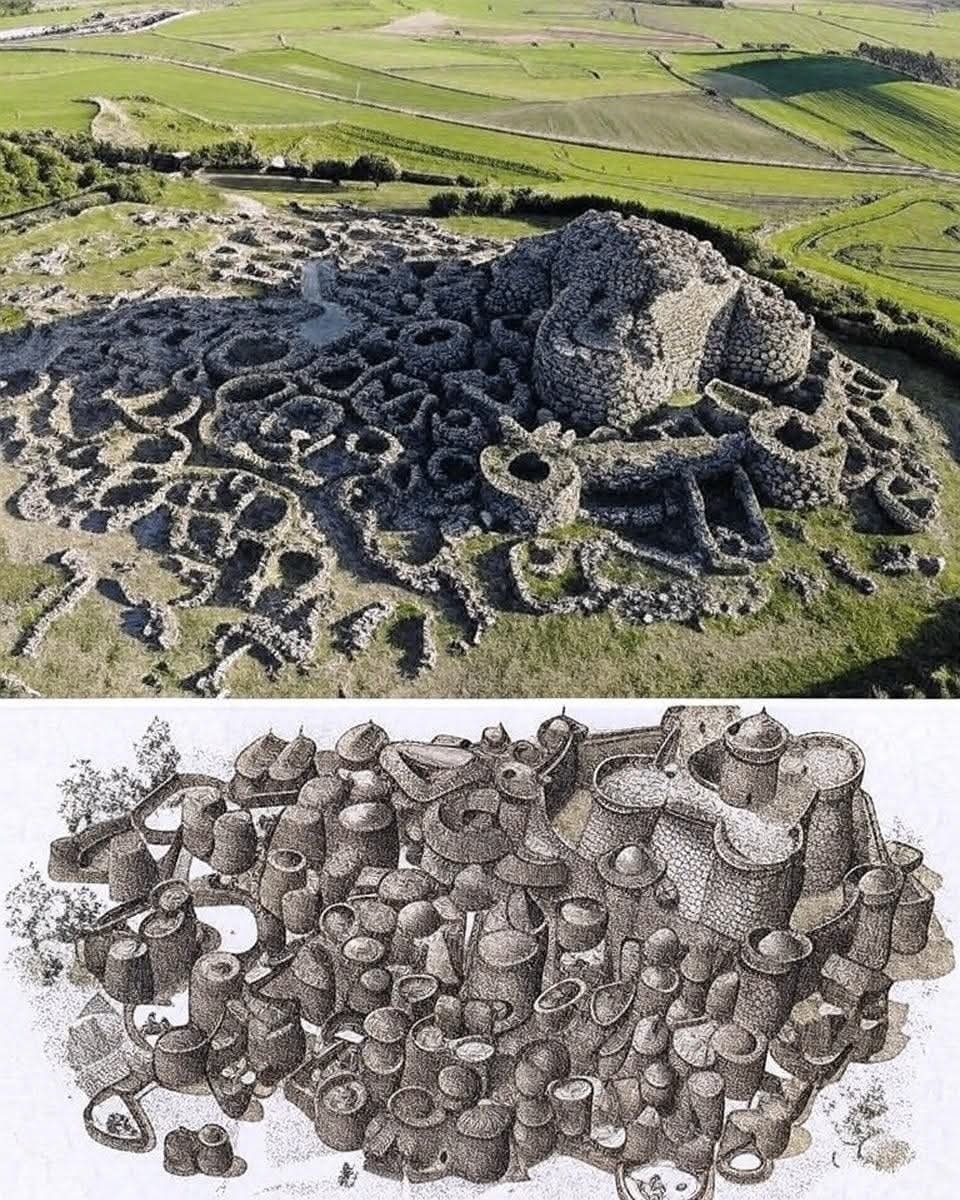Nestled in the rolling hills of Sardinia, Italy, lies one of Europe’s most remarkable archaeological wonders: Su Nuraxi di Barumini. This ancient fortress, built around 1600 BCE, has withstood the test of time for nearly 4,000 years. Long before the rise of Rome and Greece, the Nuragic civilization constructed this megalithic marvel, leaving behind a legacy that continues to captivate historians and visitors alike. Today, Su Nuraxi is not only an important historical site but also a window into a lost culture that left no written records, only monumental stone structures.
A Civilization Lost to Time
The Nuragic people, who built Su Nuraxi, thrived for over a thousand years, yet remarkably little is known about them. They left no written records, myths, or chronicles, which makes the study of their culture a fascinating challenge for archaeologists. Their most iconic creation, the nuraghe—a large, tower-like structure—can be found across Sardinia, with Su Nuraxi standing out as the most famous and best-preserved of them all. Recognized as a UNESCO World Heritage Site, Su Nuraxi provides a glimpse into the advanced engineering and architectural skills of the Nuragic civilization.
An Architectural Marvel
At the heart of Su Nuraxi stands a towering central structure, known as the nuraghe, which once reached around 20 meters (65 feet) in height. This central tower is surrounded by four smaller towers connected by thick defensive walls, creating a formidable fortress. Over time, a village of more than 200 circular stone huts grew around the fortress, arranged in a near-perfect circular pattern.
What is truly remarkable about Su Nuraxi is the method by which these structures were built. The Nuragic people used multi-ton basalt boulders to construct the towers and walls, stacking them without mortar to create a stable and enduring structure. Despite the lack of advanced tools like cranes or wheels, the builders of Su Nuraxi managed to create a durable fortress that still stands today, an impressive feat of engineering that continues to baffle modern scholars.
Advanced Society in the Bronze Age
Excavations at Su Nuraxi have uncovered evidence of a complex and advanced society. Archaeologists have found metal tools, weaving equipment, and ceramic vessels, suggesting that the Nuragic people had a well-developed culture capable of trade, agriculture, and industry. Su Nuraxi itself likely served multiple functions, including as a military stronghold, a political center, a religious site, and a symbol of the power and prestige of the Nuragic elite.
The design of the fortress reflects an organized and sophisticated society with exceptional architectural knowledge. The fortification’s strategic layout and defensive features indicate a culture capable of both defense and construction on a grand scale.
Mystery and Interpretation
Despite extensive archaeological efforts, much about Su Nuraxi remains a mystery. Scholars still debate its primary purpose—whether it was chiefly a fortress, a ceremonial center, or even a royal residence. Another fascinating question is why the Nuragic people left no written records or mythology. Some historians speculate that the absence of written language was intentional, possibly reflecting a society that preserved its culture through oral tradition rather than written text.
The name “Su Nuraxi,” which translates to “The Nuraghe” in Sardinian, highlights the deep connection between the structure and local identity. These ancient towers have become a symbol of Sardinia, representing the island’s enduring historical and cultural legacy.
A Monument That Withstood Millennia
Su Nuraxi’s survival through centuries of natural disasters, earthquakes, and shifting civilizations is nothing short of miraculous. Today, visitors can walk through the fortress’s narrow corridors, climb its towers, and stand in the midst of an ancient stronghold that predates many of history’s greatest empires.
In 1997, Su Nuraxi was declared a UNESCO World Heritage Site, recognizing it as a “unique testimony to the ancient Nuragic civilization and its mastery of stone architecture.” It remains Sardinia’s most important archaeological site, drawing both scholars and tourists from all over the world.
Why Su Nuraxi Matters Today
Su Nuraxi is more than just a ruin; it serves as a powerful reminder of human ingenuity and resilience. The fortress demonstrates that advanced societies existed long before written history, and it shows that greatness isn’t always measured in gold or literature—sometimes, it is etched in stone. The stone structures of Su Nuraxi stand as a testament to the capabilities of a civilization that, despite lacking modern technology, was able to create lasting monuments.
For modern visitors, exploring Su Nuraxi offers a chance to connect with one of Europe’s oldest and least-understood civilizations. Walking through its towering walls, visitors can feel as though they’ve stepped back in time, to an era when people, armed only with simple tools and determination, built monuments strong enough to withstand the test of time.
For those interested in learning more about the resilience of both human and animal spirit, check out these inspiring stories:
- Man Loses 360 Pounds Naturally—Internet Rallies to Support His Next Step
- Tammy Hembrow’s Bikini Photos Are Stirring Controversy—Here’s Why Everyone’s Talking
These stories echo the enduring strength of individuals, whether human or animal, and remind us that resilience and care are key to overcoming adversity.


